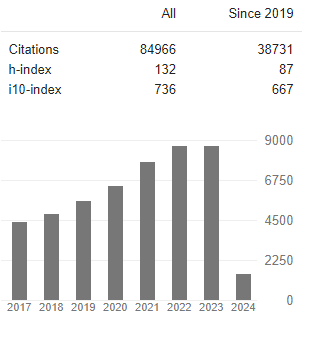Infrared Spectrum for Derivative Steroid with Potential to Treat Breast Cancer
Abstract
Ricardo Gobato, Sana Ahmed, Sufia Zaman, Lauro Figueroa Valverde, Abhijit Mitra and Ibtihal Kadhim Kareem Dosh
This study applies Density Functional Theory (DFT), using the B3LYP functional, and via ab initio Restrict Hartree-Fock (RHF) methods, to study the infrared spectrum of steroid 17-Iodo-androst-16-ene. The spectrum was obtained via computational methods ab initio RHF and DFT. Optimization of molecular structure via UFF (Universal Force Field), followed by PM3 (Parametric Method 3), with geometric optimization, obtaining the spectrum of other basis sets of steroid 17-Iodo-androst-16-ene. The study this steroid was chosen because it can could act as aromatase enzyme inhibitors and this phenomenon could be translated as good compounds to treat breast cancer. The B3LYP functional always presents the lowest thermal energy than the RHF in all calculated bases, however the RHF always presents the highest Entropy than the B3LYP, in all the calculated basis sets. The normalized spectrum calculated in the B3LYP/SVP functional/basis set have harmonic frequency with peaks 3,241.83 cm-1, 100% and 3,177.53.5 cm-1 at 43.304% absorbance. The study has so far been limited to computational methods compatible with the theory of quantum chemistry.




